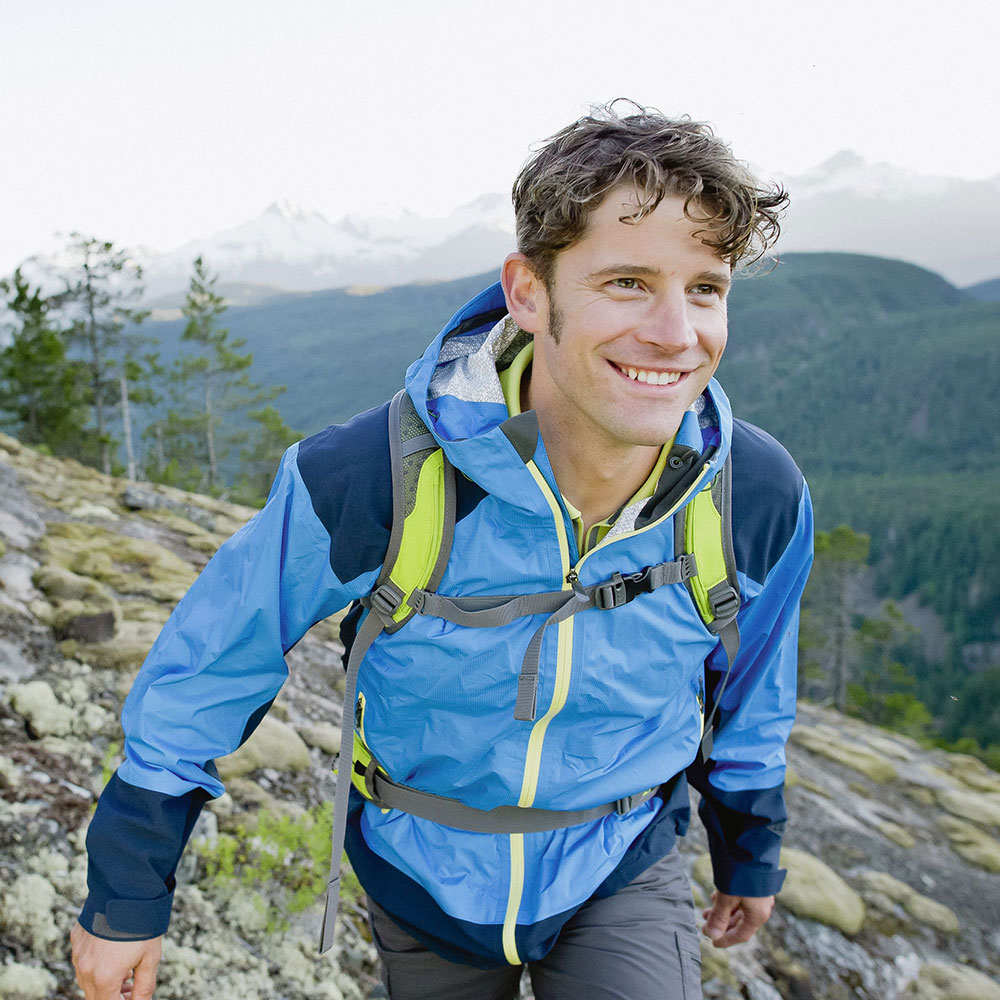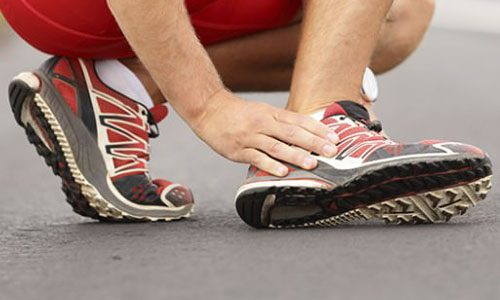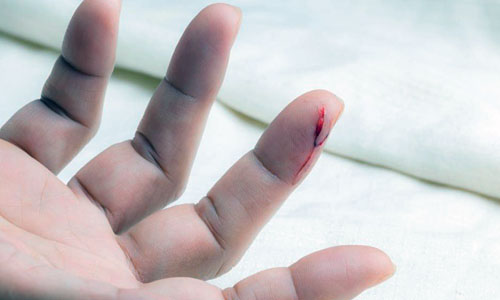Important lessons on using a first aid kit during exploration
Author

Mike has a real passion for cycling, hiking and just generally being outdoors. Being from Warrington, he is only a few hours away from North Wales, The Peak District, Yorkshire and the Lake District. He has climbed Mount Kilimanjaro and done a lot of the mountains in the Lake District. His new passion is walking his dog and enjoying a pint at the end.
A first aid kit is the most essential item of any hiker’s backpack. The trails are tough and rugged and may cause small injuries if someone falls on the way or any other accident happens. This is the reason why having a first aid kit in the bag is of no use if you don't have the knowledge of using it. You should familiarise yourself with the basics of using a first aid kit before you head out for the hiking trip. This blog will give you information on how to use the first aid kit for 4 common injuries that happen during exploration.
Head Injuries Treatment
If you are hiking without a helmet in a mountainous area where there is a chance of rock falling from above, then the chance of suffering from a head injury becomes high. Head injury can also happen if a rock climber takes a fall or due to a simple head bump. Head injuries result in a lot of blood loss but sometimes the injuries could be internal or on the neck or spine. If there are visible cuts on the head, then clean the  area with disinfectant and apply dressings and bandages but if the injury seems internal then immediately call for emergency backup to transport the injured person to the nearest medical centre.
area with disinfectant and apply dressings and bandages but if the injury seems internal then immediately call for emergency backup to transport the injured person to the nearest medical centre.
Strains or Sprains
Walking on a tough trail may lead to tripping if you place your foot inappropriately or it may cause twisting of the ankle. Check the movement and sensation of the foot having an injury and if the movement is possible with some pain then you can assume that the injury is a sprain. Getting the body part evaluated by a medical professional is an ideal way of treatment in this case. You can use the “RICE” procedure (rest, ice, compression, elevation) to reduce swelling. Wrap the injured area with split or sprain tape to immobilise that joint with compression. Once the part is immobilised elevate the foot or hand with some support.
First Aid for Cuts and Scrapes
Treatment of cuts and scrapes during the exploration is no different than how you treat it at home. Apply some pressure near the spot and clean the wound using the disinfectant. If you don’t have soap or water to clean the wound, then you can use an antiseptic wipe.  Use clean water for cleaning the wound as using water from streams or lakes increases the chance of infection. If you must use water from streams etc., then purify it first. After cleaning the wound, apply some dressing and seal the wound with a bandage to avoid exposure to the environment.
Use clean water for cleaning the wound as using water from streams or lakes increases the chance of infection. If you must use water from streams etc., then purify it first. After cleaning the wound, apply some dressing and seal the wound with a bandage to avoid exposure to the environment.
Treatment of Hypothermia
Hypothermia is caused when the body loses heat up to a point where the core temperature of the body gets dropped drastically. The wetness, cold wind and freezing temperature are the reason for the rapid loss of heat by the body. The early signs of hypothermia include cold, blueish-grey skin, shivering and uncharacteristic behaviour. You need to warm the body immediately and remove any wet clothes. Wrap a sleeping blanket or bag around the victim and give them warm water bottle to hold. You can also feed them hot beverages or soup.
Having full knowledge of possible health emergencies that could occur during the trip will help you to be prepared for them. You can learn more about the methods of first aid from your nearest medical practitioner.
Author

Mike has a real passion for cycling, hiking and just generally being outdoors. Being from Warrington, he is only a few hours away from North Wales, The Peak District, Yorkshire and the Lake District. He has climbed Mount Kilimanjaro and done a lot of the mountains in the Lake District. His new passion is walking his dog and enjoying a pint at the end.
Categories
- Sport (28)
- Product Reviews (3)
- Team Outdoor Look (7)
- Mike Wild (2)
- Mike Payton (2)
- Suse Hammond-Pears (3)
- Snowboarding (12)
- Latest Offers (105)
- Shop Talk (1)
- Competitions (7)
- Walking (413)
- Lifestyle Fashion (8)
- Travel (86)
- Kit Guides (176)
- Workwear Clothing (6)
- Safety Workwear (4)
- Health/Fitness (289)
- Skiing (91)
- Great Outdoors (1316)
- Cycling (92)
- January 2025
- December 2024
- November 2024
- October 2024
- September 2024
- August 2024
- July 2024
- June 2024
- May 2024
- April 2024
- March 2024
- February 2024
- January 2024
- December 2023
- November 2023
- October 2023
- September 2023
- August 2023
- July 2023
- June 2023
- May 2023
- April 2023
- March 2023
- February 2023
- January 2023
- December 2022
- November 2022
- October 2022
- September 2022
- August 2022
- July 2022
- June 2022
- May 2022
- April 2022
- March 2022
- February 2022
- January 2022
- December 2021
- November 2021
- October 2021
- September 2021
- August 2021
- July 2021
- June 2021
- May 2021
- April 2021
- March 2021
- February 2021
- January 2021
- December 2020
- November 2020
- October 2020
- September 2020
- August 2020
- July 2020
- June 2020
- May 2020
- April 2020
- March 2020
- February 2020
- January 2020
- December 2019
- November 2019
- October 2019
- September 2019
- August 2019
- July 2019
- June 2019
- May 2019
- April 2019
- March 2019
- February 2019
- January 2019
- December 2018
- November 2018
- October 2018
- September 2018
- August 2018
- July 2018
- June 2018
- May 2018
- April 2018
- March 2018
- February 2018
- January 2018
- December 2017
- November 2017
- October 2017
- September 2017
- August 2017
- July 2017
- June 2017
- May 2017
- April 2017
- March 2017
- February 2017
- January 2017
- December 2016
- November 2016
- October 2016
- September 2016
- August 2016
- July 2016
- June 2016
- May 2016
- April 2016
- March 2016
- February 2016
- January 2016
- December 2015
- November 2015
- October 2015
- September 2015
- August 2015
- July 2015
- June 2015
- May 2015
- April 2015
- March 2015
- February 2015
- January 2015
- December 2014
- November 2014
- October 2014
- September 2014
- August 2014
- July 2014
- June 2014
- May 2014
- April 2014
- March 2014
- February 2014
- January 2014
- December 2013
- November 2013
- October 2013
- September 2013
- August 2013
- July 2013
- June 2013
- May 2013
- April 2013
- March 2013
- February 2013
- January 2013
- December 2012
- November 2012
- October 2012
- September 2012
- August 2012
- July 2012
- June 2012
- May 2012
- April 2012
- March 2012
- February 2012
- January 2012
- December 2011
- November 2011
- October 2011
- September 2011
- August 2011
- May 2010
- April 2010
- March 2010
- February 2010
- January 2010
- November 2009
- October 2009
- September 2009
Submit a Comment